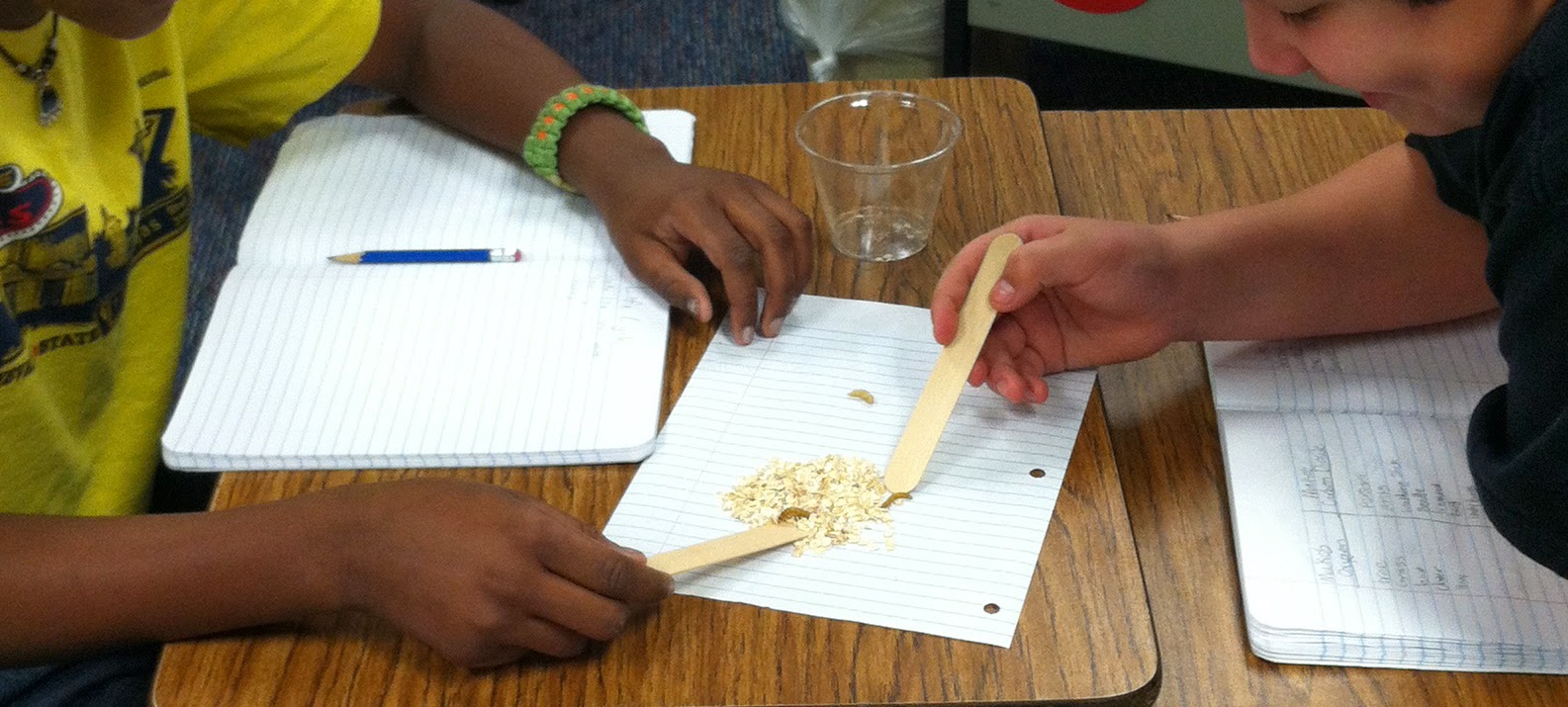I am trying to incorporate my inquiry-based learning in my classroom this year. It is a really fun way to teach and the students usually have more fun. However, this type of instruction is new to them, so we are working on having fun while learning.
In 5th grade in Texas, Students need to describe the differences between complete and incomplete metamorphosis. To begin this lesson, I dumped a cup on every group's desk containing mealworms and pupae. I asked students that if they knew anything about the insects, that they were not to say anything to take away someone else's discovery. (We talk about this often throughout the year. It isn't fair to take away someone else's learning opportunity. This frustrates the kids who know everything and really want to tell everyone else.) Students were also reminded that these were living creatures no matter how small and need to be treated with respect.
After dumping out the cups, there were squeals and screams. Some students refused to get close to the insects, others got their nose right in there.
As the were observing the insects, the students were asked to write down any observation they had. This is where I have a lot of students ask "Is this okay?" or "Can I write this down?"It is hard to get them to understand, that most of the times, if they think it, it is okay to write it down.
Then we shared our observations. This was my favorite part. Getting students to communicate can be difficult, but with a bit of probing, they are getting better at it. Some of their observations (and inferences) were:
- They look dead. (It is still and doesn't move when touched)
- It looks pregnant. (It is swollen in one place, like a pregnant person)
- It has 6 legs. (So it could be an insect)
- It has a hard outside.
- Some are brown, some are white.
- It looks like it is in a shell.
Sometimes, I had to press students to explain what they meant. At the beginning of the year, I would get shrugs when they were asked to explain more. Now they are using more adjectives and describing more. I am glad that they are now talking more.
I was careful not to give any terms or vocabulary. But some students predicted that the mealworm turned into the pupae and then into a beetle. Others thought it was the other way around. I kept the mealworms and pupa in the classroom all week and I had some beetles in another container that we continued to observe. The next day, a pupa started "hatching" from the pupa. The students were excited to see a life cycle in work!



I love it! Thanks for sharing!
ReplyDelete